The Challenge: Waterlogged and Loose-Filled Soil
When we began construction at the Kogilu site, we encountered waterlogged conditions and loose, filled-up soil. Such conditions can severely weaken the ground, making it unsafe to build on and creating potential long-term structural issues if not addressed properly.
To make the site stable enough for a residential building, we needed a methodical approach to manage the water table and stabilize the soil without going over budget.
Our Step-by-Step Approach to Stabilize the Site
- Identifying the Water Source
The first step was to identify where the water was coming from. Understanding the source allowed us to effectively plan the dewatering process, which would create a dry, stable base for the foundation. - Sectional Excavation for Surrounding Structure Stability
To ensure that nearby structures were not impacted by large-scale excavation, we opted for a sectional excavation approach. We divided the site into three parts and excavated in stages, which kept the surrounding structures safe while allowing us to reach the necessary depth for a stable foundation. - Dewatering: Removing Excess Water
After excavating, we needed to address the water buildup. We used pumps to remove excess water and then conducted manual trenching at the corners of the site to channel the water into a designated point. This step was essential to create a workable space free from water accumulation. - Soling Method for Ground Preparation
Once the water was managed, we prepared the ground using the soling method. This involved laying a bed of boulders and filling the gaps with a mixture of cement and sand aggregates. Compacted under guidance from our structural engineers, this layer created a solid base for the next step—laying the Plain Cement Concrete (PCC). - PCC and Footing Installation
After the soling process, we laid the PCC over the prepared base, creating a smooth and level surface for the footings. The footing work continued from there, ensuring the foundation was strong enough to support the residential structure. We also built slopes and trenches to divert any remaining water away from the site, preventing future waterlogging.
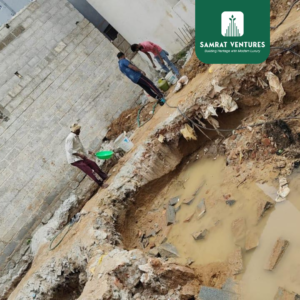
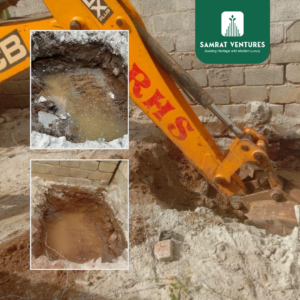
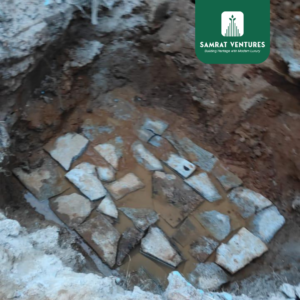
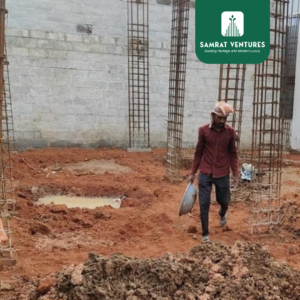
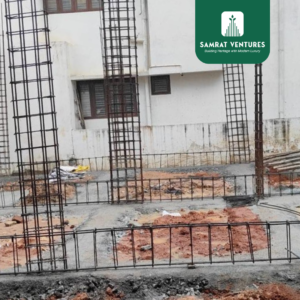
Why Site Selection and Soil Type Matter
Our experience at Kogilu has proven how crucial it is to assess the soil type and water table before selecting a plot for your project. Waterlogged soil and unstable conditions can significantly impact the construction timeline and increase costs. That’s why it’s important to work with engineers and construction experts who can tackle such challenges effectively, without breaking the bank.

Samrat Ventures’ Expertise at Work
At Samrat Ventures, we specialize in finding practical, cost-effective solutions to even the most difficult construction challenges. By carefully managing the waterlogged conditions at the Kogilu Residential Project, we were able to deliver a stable, safe foundation while staying within budget.
If you’re planning to build on tricky terrain or want expert guidance for your own home project, reach out to us! With the right approach, your dream home is closer than you think.
Stay tuned for more updates on the Kogilu Project as we continue to build your future, one brick at a time.
